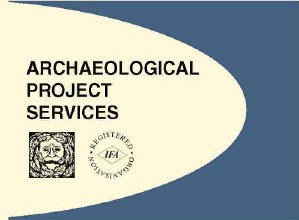Download the reports | Print this page
Summary page 3 page 1 | page 2 | Back to LHG Main Page

![]() Towards the south of the investigation area, Trenches 4 and 6 appeared to confirm the results of the geophysical survey in identifying an Iron Age enclosure with internal structures, possibly round houses. The Iron Age pottery assemblage suggests that occupation occurred on, or in close proximity to, the site in the Late Iron Age.
Towards the south of the investigation area, Trenches 4 and 6 appeared to confirm the results of the geophysical survey in identifying an Iron Age enclosure with internal structures, possibly round houses. The Iron Age pottery assemblage suggests that occupation occurred on, or in close proximity to, the site in the Late Iron Age.
![]() In the north of the investigation area, the trenching programme revealed substantial evidence of Romano-British domestic occupation primarily during the first and second centuries, although stretching into the third and fourth. The discovery of enclosure ditches corresponding to those identified in the geophysical survey confirmed the accuracy of the geophysics, indicating a large elongated rectangular enclosure aligned on a northeast-southwest axis, more than 110m long by 50m wide. This feature appeared to have a smaller internal rectilinear enclosure towards the southwest, within which remains of a possible aisled building were noted.
In the north of the investigation area, the trenching programme revealed substantial evidence of Romano-British domestic occupation primarily during the first and second centuries, although stretching into the third and fourth. The discovery of enclosure ditches corresponding to those identified in the geophysical survey confirmed the accuracy of the geophysics, indicating a large elongated rectangular enclosure aligned on a northeast-southwest axis, more than 110m long by 50m wide. This feature appeared to have a smaller internal rectilinear enclosure towards the southwest, within which remains of a possible aisled building were noted.
![]() Further ditches, along the same alignment, radiated from the large enclosure, probably forming a field boundary and trackway system. The stoned area within Trench 2 may provide an indication of the nature of the strong positive responses identified during the course of the geophysical survey. The assemblages of Romano-British pottery were indicative of a largely local trade pattern, with some indications of more far flung trading contacts.
Further ditches, along the same alignment, radiated from the large enclosure, probably forming a field boundary and trackway system. The stoned area within Trench 2 may provide an indication of the nature of the strong positive responses identified during the course of the geophysical survey. The assemblages of Romano-British pottery were indicative of a largely local trade pattern, with some indications of more far flung trading contacts. ![]()
page 3 of 3« Previous page
© Wrawby Local History Society 2008-2009